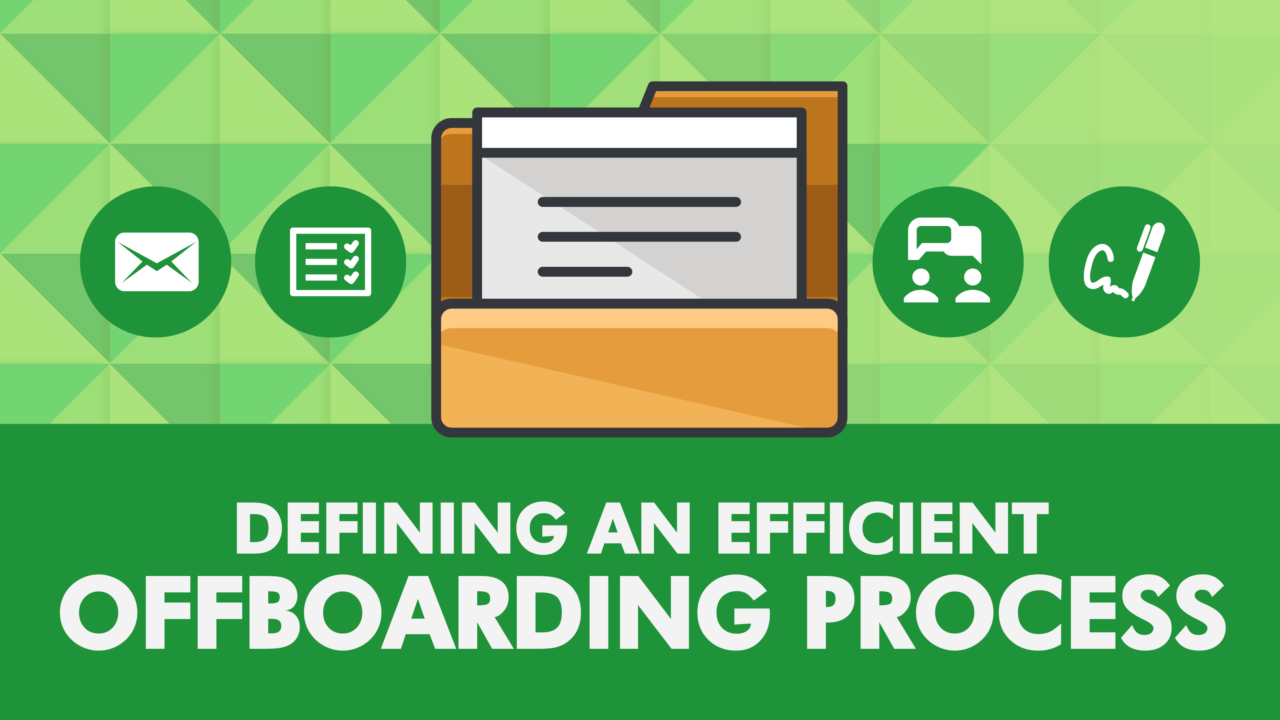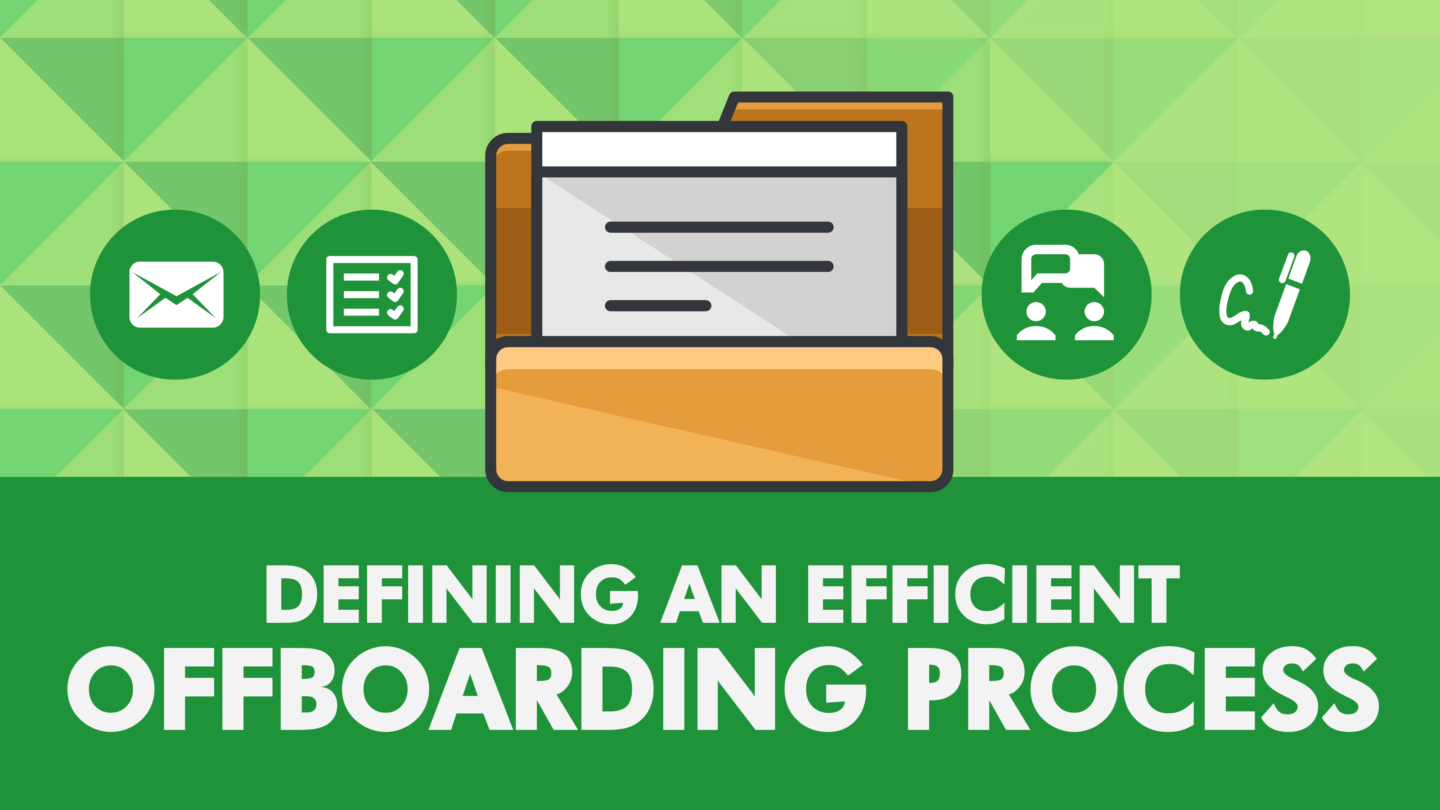
Defining an Efficient Offboarding Process
Much attention is given to the onboarding processes companies employ, with articles written about the best practices and procedures, etc. However, the offboarding process is equally as important, and needs just as much attention to be done correctly.
What is an offboarding process?
An offboarding process is what happens when an employee’s time at an organization comes to an end, either voluntarily or involuntarily. Obviously, the process will vary depending on whether the employee resigns, retires, or if that person’s employment has been terminated. Regardless, how a company manages the employee’s experience upon exit is very important. Ideally, you want to part on the best terms possible – which may be challenging if the employee has been terminated. An efficient offboarding process also is necessary to protect the company.
Why is a defined offboarding process important?
Having a defined offboarding process is important not only to maximize the efficiency of the transition for both the employee and company, but to protect the organization as well. Regulating the process ensures that compliance with various regulations is upheld, and that no errors are made with regards to collecting company equipment, deactivating employees’ accounts, and making sure no security risks are present once they leave. It’s also important to document the offboarding process correctly to avoid the risk of unlawful dismissal lawsuits.
Steps for a smooth offboarding process
The best way to make sure all the steps of an offboarding process are followed is to create multiple checklists. The first of these should go to HR and should include the following:
- Get a letter of resignation: this obviously only applies if the employee is voluntarily leaving the organization. The employee will need to sign an official document tendering their resignation.
- Acknowledge the letter: written confirmation that you’ve received the letter of resignation is important, as it creates a paper trail that indicates that you are following the process.
- Schedule an HR meeting for out-processing: get the employee’s forwarding address/contact details, so benefits and final pay cheque can be forwarded, determine if they have any accrued leave, etc.
- Enter termination information: update the records so the employee is no longer included in group emails, health plans, deactivate existing log in credentials to company tools and no longer has security access to the building, etc.
- Determine reimbursement: first ensure the employee doesn’t owe the company any reimbursement – i.e. if they failed to meet the terms of a signing bonus, etc. – and then also make sure they are fully paid for any expenses they need to be reimbursed for.
- Review NDAs and other agreements: if the employee signed a non-disclosure or any other confidentiality agreement, HR needs to go over the terms of it. They should also clearly discuss any penalties or consequences the employee may face if they break the agreements.
- Provide the employee with a checklist: make sure the employee knows exactly what they need to do prior to leaving.
This employee checklist applies to an employee who is voluntarily leaving the company. The offloading process will be different if the worker is terminated and must be escorted from the premises, for example.
- Settle any petty cash advances and other accounts: the employee should also make sure they don’t owe any money to the company, and also that they aren’t owed any money – either from the organization, or any accounts they may be working on.
- Prepare for their successor: in the event that the employee isn’t training their successor, they should ensure that all files and information are very clearly labeled and organized, in order to make the transition as smooth as possible for the new worker.
- Return any company property and remove their own: of course the employee will want to ensure they take all of their personal belongings when they leave, but in order to avoid inconveniences down the line, they’ll also want to make certain they return any company property. They should be provided a checklist, which includes anything from mobile devices issued by the company, to keycards and keys, etc.
- Provide contact info: this could include a forwarding address for mail or a final pay cheque, or other information the company can use to get in touch with the employee for various reasons.

Another key checklist to have handy is one for the supervisor or manager who will be involved in the offboarding process. Again, this checklist assumes the employee is leaving voluntarily.
- Inform the appropriate people: the manager will need to inform HR of the employee’s resignation so they can get started on their process. It is also a good idea for the manager to be the one to inform the team that the employee is leaving. If necessary, the employee’s clients need to be informed of their departure as well.
- Determine replacement: the manager will need to determine who will be replacing the employee who is leaving. If that employee won’t be training the replacement, the manager will need to arrange that as well. In the meantime, the manager will need to figure out who will be taking on the workload of the departing employee while the offboarding process is completed and a new employee is brought in. Additionally, it will fall to the manager to ensure that all necessary information, i.e. passwords, client lists, etc., are prepared for the new employee.
- Project completion: the manager will work with the employee to create a schedule to finish up any ongoing projects with clients.
- Exit interview: this may be a shared task with HR, but the manager should certainly be involved in the exit interview for the employee. Exit interviews are a very important part of the offboarding process, as they give insight into the work culture of the organization. If there are consistent reasons employees are leaving, these trends can be looked into in an attempt to fix them.
- Final sendoff: even when employees are leaving, they want to feel appreciated. The manager would be responsible for the final part of the offboarding process, which is the final sendoff. Whether it’s a card signed by the coworkers or a full-on party, the manager will set something up to let the departing employee know they were a valued member of the team.
The final checklist to look at is the one for IT. This would be a similar checklist regardless of how the employee left the company.
- Prepare equipment: once informed of the employee turnover, IT would be responsible for preparing replacement equipment for the new hire
- Recover equipment: if the employee had use of any company phones or laptops, etc., IT would be responsible for ensuring those are recovered.
- Deactivation: finally, IT would deactivate any accounts the employee had in order to maintain airtight security throughout the company. This could include email addresses, access to internal servers, etc.
Final thoughts on offboarding process
Ensuring you have a distinct, defined offboarding process is just as important as having an efficient onboarding process. Following these steps will mitigate any security risks, wrongful dismissal suits, loss of proprietary information, and any number of other inconveniences that can result in a mismanaged offboarding process.




